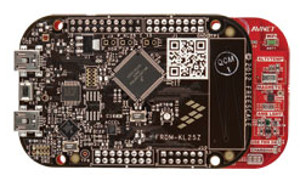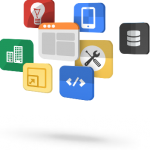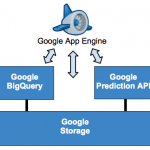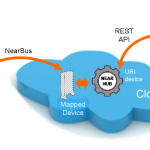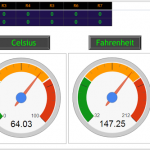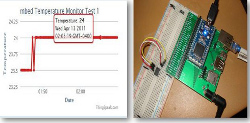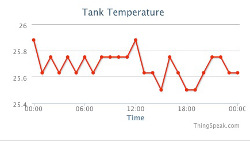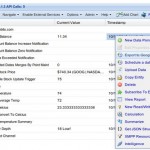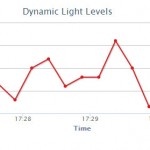The PubNub Data Stream Network enables developers to rapidly build real-time apps that scale globally, without worrying about infrastructure. PubNub enables you to easily build and scale real-time apps and connected data-stream services for home automation, Internet-of-Things applications, connected devices and just about anything else with APIs and support across a large range of different platforms, operating systems and programming languages.
Using PubNub’s extensive, friendly documentation, quick-start guides, APIs and building blocks, you can easily get started building your own real-time, connected apps very quickly – building an entire simple app in minutes, without worrying about cloud connectivity or infrastructure.
The aim of the PubNub system is to provide a real-time infrastructure and framework for developers to build real-time apps as easily as building a web page. The PubNub Realtime Network provides global cloud infrastructure and key building blocks for real-time interactivity, allowing developers to spend their time and effort on what they do best, creating brilliant real-time apps, without worrying about infrastructure challenges, but also providing users with the real-time information updates, real-time connectivity, interaction, communication and collaboration experiences that they expect from today’s apps and web services.
Key “building blocks” are provided to implement basic functions such as analytics, mobile support, security, storage, presence detection and push notifications in your app, allowing you to rapidly “plug together” cloud-connected application prototypes.
The system provides support and SDKs for over 50 languages and development platforms, including iOS, Android, JavaScript, .NET, Java, Ruby, Python, PHP, and many others, and supports a vast array of platforms and frameworks with easy-to-use APIs for mobile, browser, desktop, server, or embedded Internet-of-Things applications.
Furthermore, PubNub Presence allows real-time monitoring of devices and their presence in Internet-of-Things applications, and PubNub offers many other features that are particularly valuable in IoT applications. However, the capability that PubNub provides, allowing you to add real-time communications to your apps without worrying about infrastructure, and to stream, store, sync, secure and manage your data on all devices, everywhere, is valuable for applications in all kinds of mobile, desktop or browser-based environments – not only in Internet-of-Things applications.
As well as support for these languages and operating systems, PubNub provides support, documentation and SDKs to enable connectivity with many popular hardware platforms for embedded and IoT applications, such as Electric Imp, mBed and Raspberry Pi. This allows for low-cost prototype and final product development thanks to PubNub working with these open-source hardware platforms.
You can try PubNub free of charge, using a free sandbox account for demonstration, hacking or experimentation. A sandbox-level account allows you to build PubNub-based applications with up to 20 daily active devices, which should be more than enough to get you up and running. If you need support, the free sandbox-tier account also provides access to the PubNub community forums, and a “best effort” service-level agreement.
Of course there are also a broad range of paid account tiers available, allowing you to support the number of devices and amount of bandwidth that your application requires at an economic rate that can scale up and grow with your business.
Message payloads up to 32 kilobytes in size can be sent through PubNub, with a small fee per message applicable to paid accounts, charged on a varying scale depending on the message payload size you send and whether or not SSL encryption is required for your message traffic.
The PubNub Developer Portal gives you easy access to all of your usage metrics, and these metrics are updated at least once per day, allowing you to always get an up-to-date snapshot of your historical message traffic and usage charges.
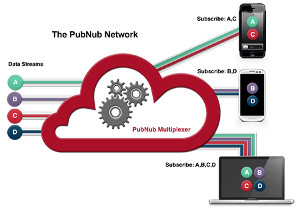
PubNub’s global cloud infrastructure allows you to build and deploy real-time apps with a very robust level of scalability, reliability, performance and service guarantees. PubNub streams more than three million messages a second to 150 million devices per month, connecting every PubNub-enabled device and platform in the world with a latency of less than 250 milliseconds.
With replication across 14 data centres around the world, PubNub provides a very high level of service reliability, and building and deploying your real-time apps via PubNub’s global infrastructure provides your applications and services with that same level of reliability even when you’re scaling up to hundreds of thousands of concurrently connected clients.
Data streamed through the PubNub real-time network is instantly replicated to PubNub’s data centres around the globe to minimise latency for the end user, and multiple levels of redundancy and failover ensure that your PubNub-based real-time app solutions always work essentially anywhere with very low latency, even with millions of users.
PubNub allows you to send messages between mobile devices instantly, and allows you to send and listen to events within your app by using simple publish and subscribe API calls. You can subscribe to a channel with a simple API call, and once subscribed to a channel, simply use the Publish API, specify the channel name and the message you’d like to send in order to publish a message to a channel.
The fact that PubNub is built around a Publish/Subscribe model for real-time messaging and signalling makes PubNub ideally suited to collecting, collating and distributing information from Internet-of-Things networks, an application area where protocols such as MQTT that are also based around a publish/subscribe messaging model are increasingly popular.
Once again, all of this means there exists another option, another choice, another system to get your Internet-of-Things ideas from your notebook to reality. And doing just that with any system may seem like an impossible task.
However with our team here at the LX group, it’s simple to get prototypes of your devices based on the Arrayent platform up and running – or right through to the final product. We can partner with you – finding synergy with your ideas and our experience to create final products that exceed your expectations.
To get started, join us for an obligation-free and confidential discussion about your ideas and how we can help bring them to life – click here to contact us, or telephone 1800 810 124.
LX is an award-winning electronics design company based in Sydney, Australia. LX services include full turnkey design, electronics, hardware, software and firmware design. LX specialises in embedded systems and wireless technologies design.
Published by LX Pty Ltd for itself and the LX Group of companies, including LX Design House, LX Solutions and LX Consulting, LX Innovations.


